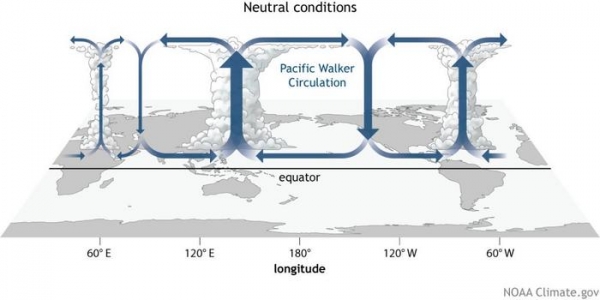The Pacific Ocean covers 32% of Earth’s surface area, more than all the land combined. Unsurprisingly, its activity affects conditions around the globe.
The Pacific Ocean covers 32% of Earth’s surface area, more than all the land combined. Unsurprisingly, its activity affects conditions around the globe.
Periodic variations in the ocean’s water temperature and winds, called the El Niño–Southern Oscillation, are a major meteorologic force. Scientists know that human activity is affecting this system, but are still determining the extent. A new study in Nature has revealed that the atmospheric component — called the “Pacific Walker Circulation” — has changed its behavior over the industrial era in ways that weren’t expected. The international team of authors also found that volcanic eruptions can cause the Walker Circulation to temporarily weaken, inducing El Niño conditions. The results provide important insights into how El Niño and La Niña events may change in the future.
“The question is, ‘How does the background circulation change?” said co-author Samantha Stevenson, an associate professor at UC Santa Barbara’s Bren School of Environmental Science & Management. “We care about the Walker Circulation because it affects weather around the world.”
Read more at: University of California - Santa Barbara
The Walker Circulation drives air currents in the Pacific, which then affect weather conditions across the globe. (Photo Credit: Fiona Martin)






